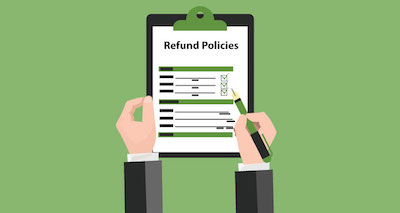No matter if you are selling products or services in your website or if you have an app at the Apple Store or Play Store, then you know that you need to have return & refund policies in place.
Discover everything you need to know about return policies.

The truth is that if we see some websites following the best practices, there are others that are completely missing the point. In case you belong to the latter, then you need to know that you’re probably lacking sales because of it.
Best Practices For Return & Refund Policies
The truth is that when you sell products or services on your website, you have the option to have return & refund policies in place or to simply state that you don’t accept returns or refunds. No matter which one you choose, here are some guidelines you should follow:
#1: Jurisdiction:

One of the things that most website owners don’t even think about is the jurisdiction. So, even if you only sell products or services within the United States, you are required to have return & refund policies in place. Besides, depending on the state where you live, you may need to be more or less specific about the conditions.
Check out 3 return policy mistakes you need to avoid.
#2: The International Law:
In case you are selling to other countries in the world, then you need to comply with international law as well.
#3: It Doesn’t Need To Be The Same For Everything hat You Are Selling:
One of the things that you should keep in mind when you are creating your return & refund policies is that you don’t need to have a unique policy for everything that you are selling. Just to give you an example, Apple doesn’t apply the same return and refund policy to products and services. And you can do the same if you want.
Check out these 5 best practices for handling returns.
#4: Offering Vs Not Offering Refunds:

Many small business owners and website owners often wonder if i is better to have a refund policy in place or not. The truth is that it depends on you. In our opinion, it is always best to offer a refund which can be a store credit. The main reason is that people are used to going back to the store and exchange or return the products they don’t like. So, when you don’t have this option available, you may end up suffering the consequences in the longer term. The reality is that you may see yourself in a situation where you are loaded with negative feedback from customers just because you don’t do refunds. And this is the last thing you need.
How to turn your returns and exchanges more profitable.
#5: Be As Clear As You Possible:

No matter if you are creating new return & refund policies or simply improving the ones that you already have in place, you need to make sure that they display all the information required in a simple and easy way to read.
Remember that the goal of maintaining return & refund policies on your website is to allow your customers to see them. So, you want to make sure that they are clear and without any technical or legal jargon.